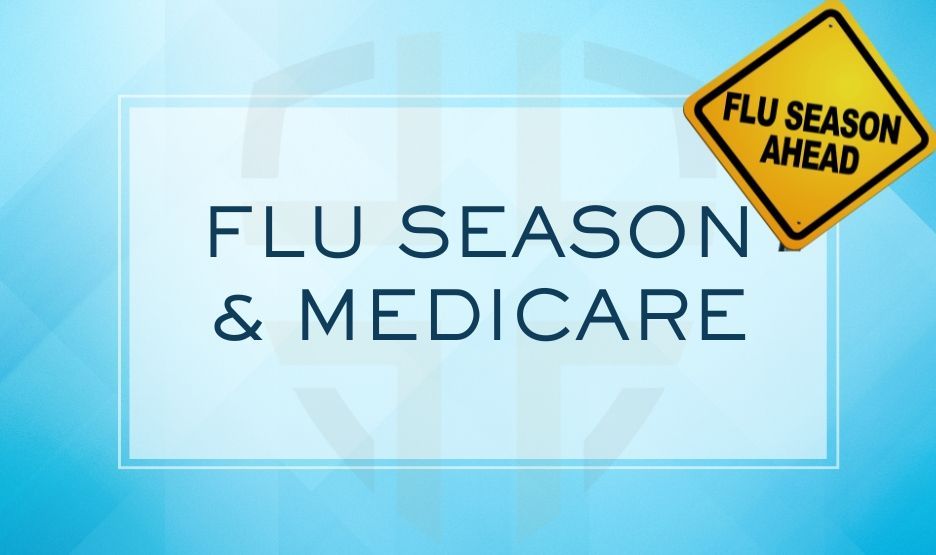Flu Season: Protecting Seniors During the High‑Risk Months

Flu season arrives every fall and winter—and for those on Medicare or nearing eligibility, it’s not just an inconvenience. Influenza (the flu) poses serious health risks, especially for older adults with chronic conditions. But with the right precautions, coverage, and guidance, you can protect your health and avoid unexpected costs.
In this article, we’ll explain:
- Why flu is more dangerous for seniors
- What the 2024–2025 season data shows
- How Medicare, especially Part B, interacts with flu care
- The role a Medigap (Medicare Supplement) plan can play
- Practical tips to stay healthy this flu season
- How UEBE Insured can help you make smart Medicare choices
Let's dive in.
1. Why Flu is Especially Risky for Ages 65+
Higher Rates of Serious Outcomes
- In typical seasons, 70–85% of seasonal flu–related deaths happen in people 65 and older. CDC
- Between 50–70% of flu hospitalizations are among adults 65+ National Council on Aging
- Because the immune system weakens with age (a process called immunosenescence), older adults don’t fight off viruses as strongly. PMC
Moreover, people 65+ often have chronic health conditions (e.g. diabetes, heart disease, lung disease) that increase risk of complications. National Council on Aging
Recent Season Data (2024–2025)
- The cumulative hospitalization rate in 2024–25 among adults 65+ was 403.1 per 100,000 — the highest of any age group in that season. CDC
- Influenza hospitalizations this season were 1.8 to 2.8 times higher than historical medians in many age groups. CDC
- To date, the CDC estimates over 24 million illnesses, 310,000 hospitalizations, and 13,000 deaths for the 2024–25 flu season. CDC
All that is to say: flu season is not “just a sniffle” for older adults. It can lead to long hospital stays, serious complications like pneumonia and high medical bills.
2. How Medicare Covers The Flu (Especially Part B)
When a Medicare beneficiary seeks flu care (vaccination, outpatient visits, or hospital treatment), different parts of Medicare may apply.
Flu Vaccines Using Part B
- Medicare Part B covers
one flu shot per flu season at no cost ($0 copay) for most people enrolled in Part B (if your provider accepts Medicare).
- The CDC and Medicare encourage people 65+ to use higher-dose, recombinant, or adjuvanted flu vaccines (rather than standard dose) because studies suggest they yield stronger immune response in older adults. CDC
- If a provider charges more than Medicare allows (called “excess charges”), you may be responsible for the excess unless a Medicare Supplement plan covers it.
Doctor Visits, Testing, & Treatment – Part B Coinsurance & Deductible
If you get flu-like symptoms and see a doctor:
- You must meet the
Part B annual deductible before more Medicare payments begin.
- Then Medicare pays
80% of the Medicare-approved amount for outpatient services (doctor visits, lab tests, X-rays), and you pay the remaining
20% coinsurance.
- There is
no out-of-pocket maximum for Part B services under Original Medicare alone. Costs can accumulate if you see multiple specialists or require extensive testing.
Hospitalization – Part A & Part B Working Together
In serious flu cases requiring hospitalization:
- Medicare Part A handles inpatient hospital costs (after its Part A deductible).
- Once you are discharged, ongoing outpatient care, follow-up testing, or rehab services fall under Part B terms (coinsurance, deductible) unless a Medicare Supplement or Medicare Advantage plan covers them.
Because flu can lead to prolonged care — hospital + outpatient follow‑ups + rehab — the cost exposure under Original Medicare can be significant.
3. How Medigap (Medicare Supplement) Helps with Flu‑Related Costs
A Medicare Supplement (“Medigap”) policy can make a big difference in reducing your financial risk during flu season.
What Medigap Plans Typically Cover
Depending on the plan (G, N, K, L, etc.), Medigap can help cover:
- The
20% coinsurance on Part B services
- Medicare Part B
deductible (for older plans)
- Excess charges above Medicare-approved amounts
- Foreign travel emergency (less relevant to flu, but included in many plans)
For example, Plan G is very popular because it covers nearly all gaps in Part B, except the Part B deductible itself (if that deductible still applies in your state).
Why That Matters in Flu Season
Because flu care often involves multiple visits, lab tests, imaging, and possible hospitalizations, those 20% coinsurance amounts can add up quickly. A Medigap plan can reduce or eliminate many of those costs.
Also, because influenza is seasonal and somewhat predictable, having predictable and lower cost-sharing in your plan helps budget your healthcare spending during peak months.
4. What to Watch Out For (Risks & Limitations)
While Medigap offers strong protection, it’s not perfect. Here are important caveats:
- Medigap
does not cover prescription drugs (you still need a Part D plan).
- Some Medigap plans are
not available to new enrollees (e.g. Plan F for those who became eligible after Jan 1, 2020).
- If you try to enroll outside your
open enrollment period, you may face
medical underwriting or be denied if you have health conditions.
- Some Medigap policies don’t cover
excess charges (check your policy).
- If you have a
Medicare Advantage (Part C) plan instead of Original Medicare + Medigap, your coverage, networks, and rules differ.
5. Tips to Stay Healthy & Protected During Flu Season
Because seniors are at higher risk, extra precautions are wise. Here are actionable tips:
- Get vaccinated — early but not too early
Aim to get your flu shot by October, but not as early as July or August (immunity may wane). National Council on Aging Use a higher-dose, adjuvanted, or recombinant vaccine if available. National Council on Aging - Practice good hygiene & avoidance
Frequent handwashing, avoiding crowded indoor settings during peak months, and staying away from people who are sick can reduce spread. - Seek care early
If symptoms arise (fever, cough, body aches), especially for older adults, don’t wait. Early antiviral treatment can reduce severity. - Know your care network
If you have a Medicare Advantage plan with provider networks, understand where you need to go. - Bundle preventive care
Use Medicare's preventive visits (like annual wellness check) to discuss flu risk, vaccinations, and managing chronic diseases. - Monitor respiratory symptoms closely
Because flu can trigger or worsen conditions like pneumonia, COPD, or heart disease, any worsening signs (shortness of breath, chest pain) warrant prompt evaluation. - Plan for contingency
In severe seasons like 2024–25, hospital surges can tax systems. Knowing your plan coverage, what hospitals accept Medicare, and having contacts ready can help avoid delays.
6. Why This Matters for Medicare Beneficiaries
Because flu risk is high and costs can escalate rapidly, making informed Medicare decisions before flu season begins is essential. Potential clients should:
- Ensure your Medicare coverage is up to date before October.
- Use open enrollment (October 15–December 7) to adjust plans if needed.
- Ask about plans that cover higher-dose vaccines or guarantee minimal cost-sharing for outpatient care.
This is a key value we as insurance advisors deliver: helping clients avoid surprise bills, maximize coverage, and stay healthy through high-risk months.
7. UEBE Insured: How We Help You Navigate Flu Season & Medicare
At UEBE Insured, we specialize in helping seniors pick Medicare plans that align with both health needs and peace of mind.
Here’s what we offer:
- Personalized plan comparisons (Original Medicare + Medigap + Part D vs. Medicare Advantage)
- Checking whether your primary care providers accept your insurance
- Reviewing vaccine coverage and flu care terms
- Helping you enroll or switch plans during Annual Enrollment Period (Oct 15 – Dec 7)
- Flu season checkups, reminders, and support if issues arise
Our goal is simple: to make your coverage easy. We will walk with you step by step, like family.
📞 Call us anytime at 936‑703‑2361 to set up a no‑cost consultation.
8. Summary & Call to Action
Flu season is more than a seasonal nuisance for Medicare beneficiaries. It’s a period of elevated health risk and financial exposure. With high rates of hospitalization and death among older adults, it's critical to:
- Stay up to date on flu vaccines
- Understand how Medicare Part B handles flu care
- Use a Medigap or Medicare Advantage plan to limit cost exposure
- Practice preventative health measures
- Plan ahead and get coverage set before flu season begins
If you’d like help reviewing your Medicare options, comparing Medigap/Medicare Advantage plans, or ensuring your coverage is flu‑season ready, we’re here. Let’s protect your health and your wallet this season.
📞 Reach out to UEBE Insured today at 936‑703‑2361 to get started.






